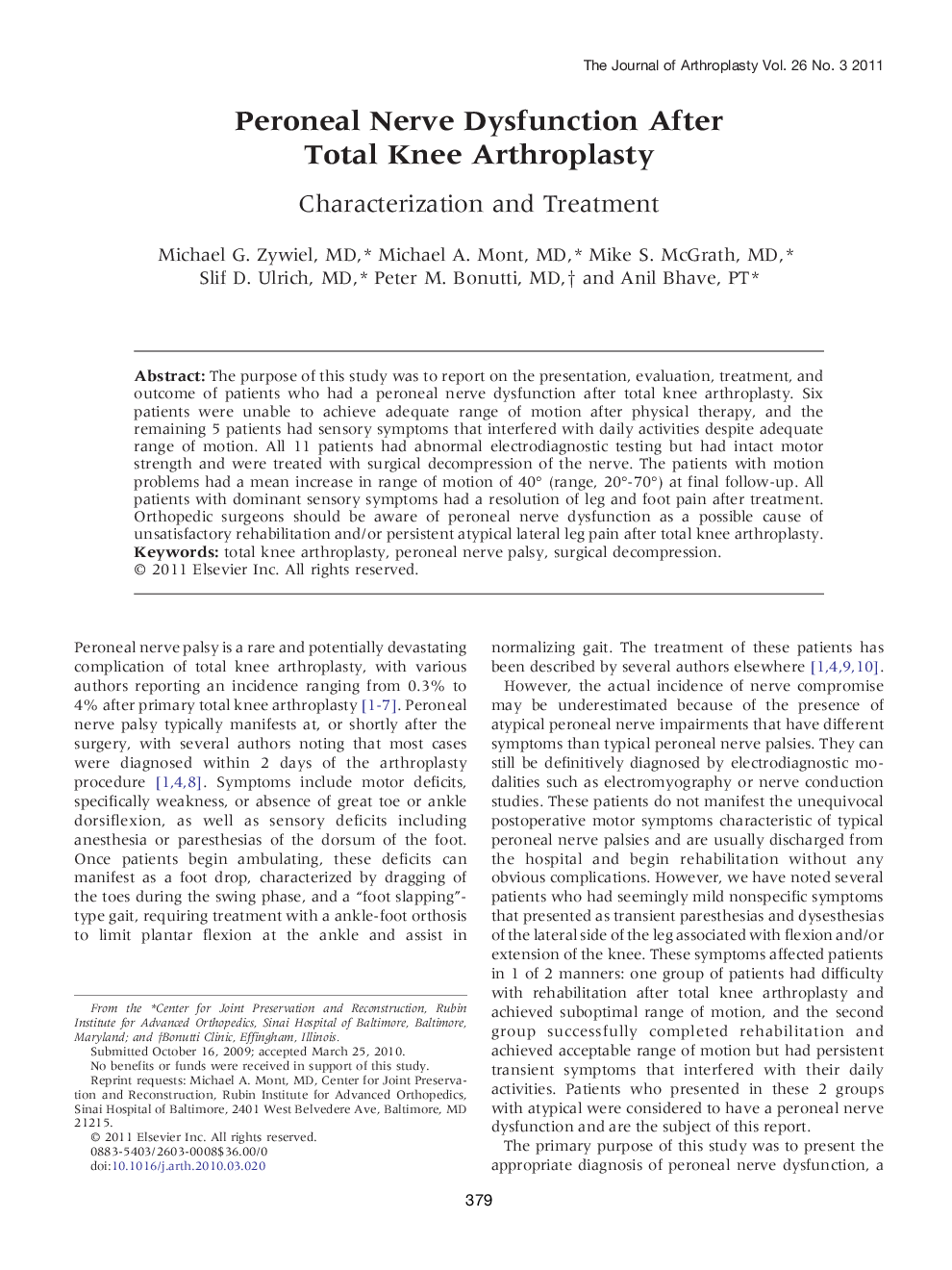| Article ID | Journal | Published Year | Pages | File Type |
|---|---|---|---|---|
| 4062770 | The Journal of Arthroplasty | 2011 | 7 Pages |
The purpose of this study was to report on the presentation, evaluation, treatment, and outcome of patients who had a peroneal nerve dysfunction after total knee arthroplasty. Six patients were unable to achieve adequate range of motion after physical therapy, and the remaining 5 patients had sensory symptoms that interfered with daily activities despite adequate range of motion. All 11 patients had abnormal electrodiagnostic testing but had intact motor strength and were treated with surgical decompression of the nerve. The patients with motion problems had a mean increase in range of motion of 40° (range, 20°-70°) at final follow-up. All patients with dominant sensory symptoms had a resolution of leg and foot pain after treatment. Orthopedic surgeons should be aware of peroneal nerve dysfunction as a possible cause of unsatisfactory rehabilitation and/or persistent atypical lateral leg pain after total knee arthroplasty.
